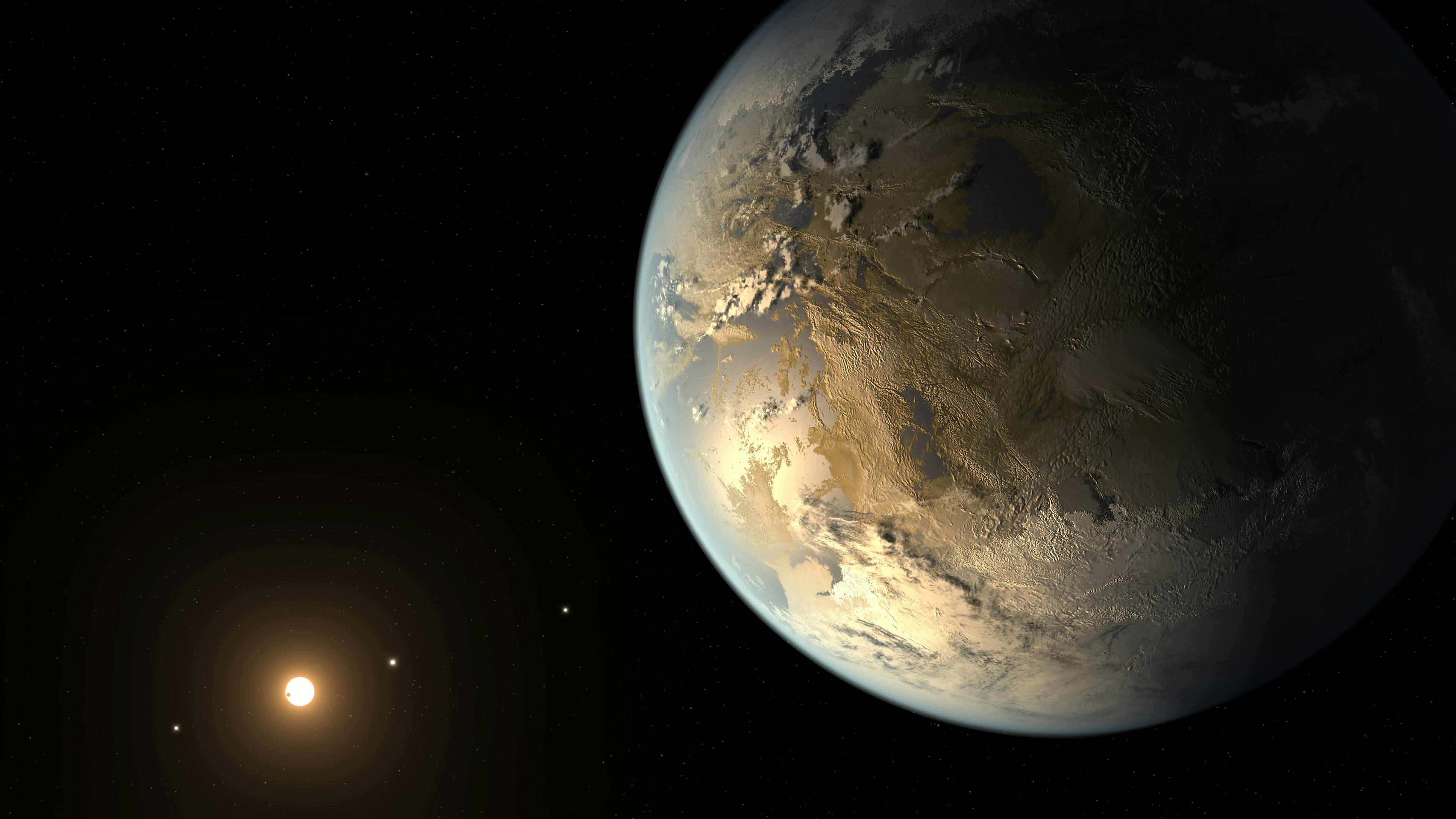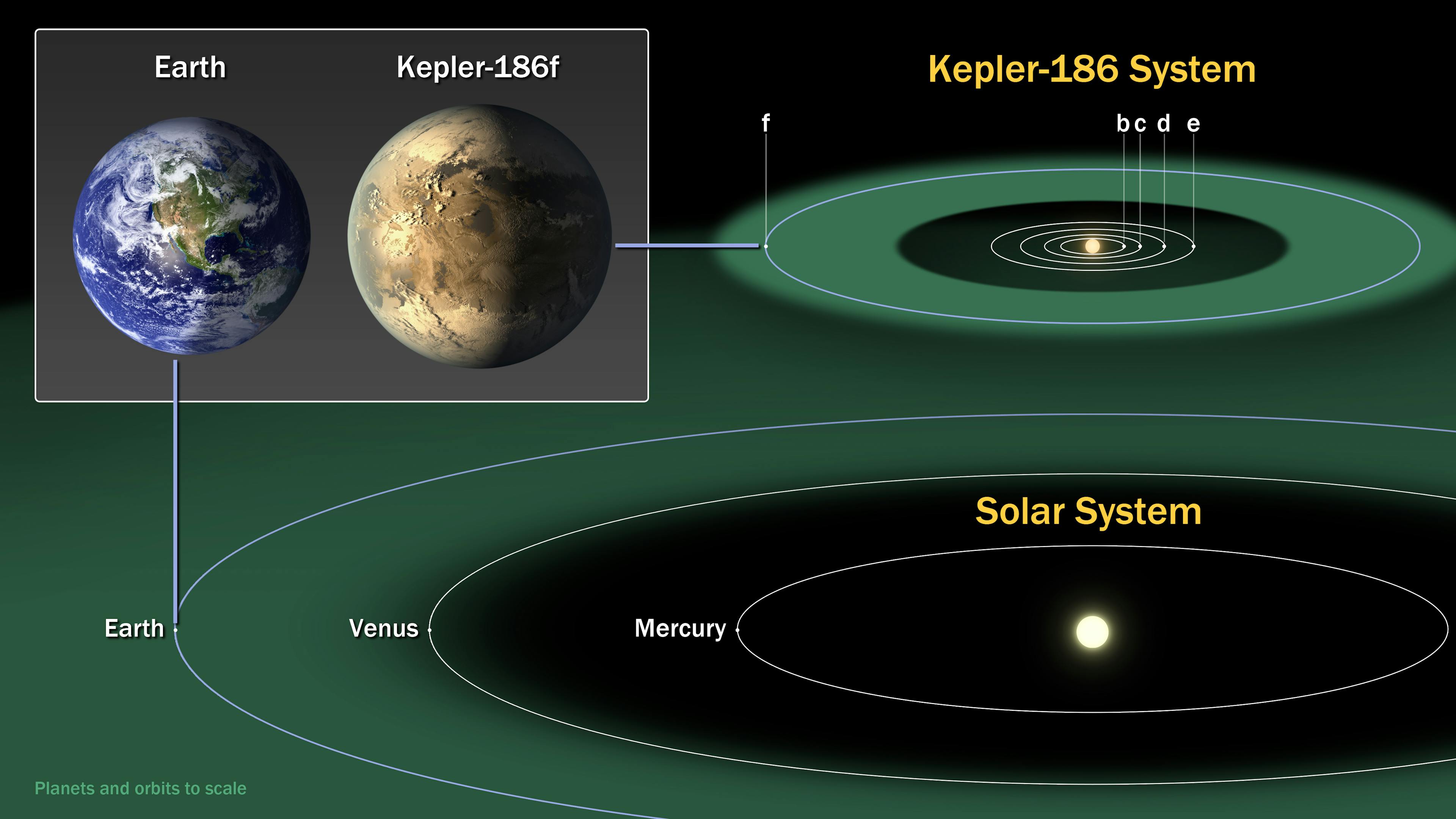
The artist’s concept depicts Kepler-186f , the first validated Earth-size planet to orbit a distant star in the habitable zone.
The NASA’s Kepler Space Telescope team have discovered the first Earth-size planet orbiting a star in the “habitable zone”.
The habitable zone, also known as the “Goldilock zone”, is the area around a start where planets (or satellite) are in the right range of temperature to posses liquid water on their surface. A condition we believe to be fundamental for the development of life. The planet, called Kepler-186f is the first example outside our home of an Earth size planet in the habitable zone. The planet has a radius 1.1 times the size of Earth, and it orbits an M-dwarf star which is roughly half the size of our Sun. The system is 500 light years away from us.

The diagram compares the planets of our inner solar system to Kepler-186, a five-planet star system about 500 light-years from Earth in the constellation Cygnus. The five planets of Kepler-186 orbit an M dwarf, a star that is is half the size and mass of the sun.
Kepler-186f is the outermost planet in that star-system with 5 other companions orbiting closer to their star. While the planet is probably rocky, we don’t know its exact composition, and the only way to estimate the probability of liquid water (and therefore life) lies with discovering its atmospheric composition, which can only be done with more sophisticated techniques and instruments. It orbits around its star in 130 Earth-days, but even at midday the brightness of its sun in the sky is never more than what ours look slate in the afternoon.
The million dollar question now is if there’s life on Kepler-186f how has it adapted to the lower light intake?
Reference
An Earth-Sized Planet in the Habitable Zone of a Cool Star, Elisa V. Quintana et al. Science Vol. 344 no. 6181 pp. 277-